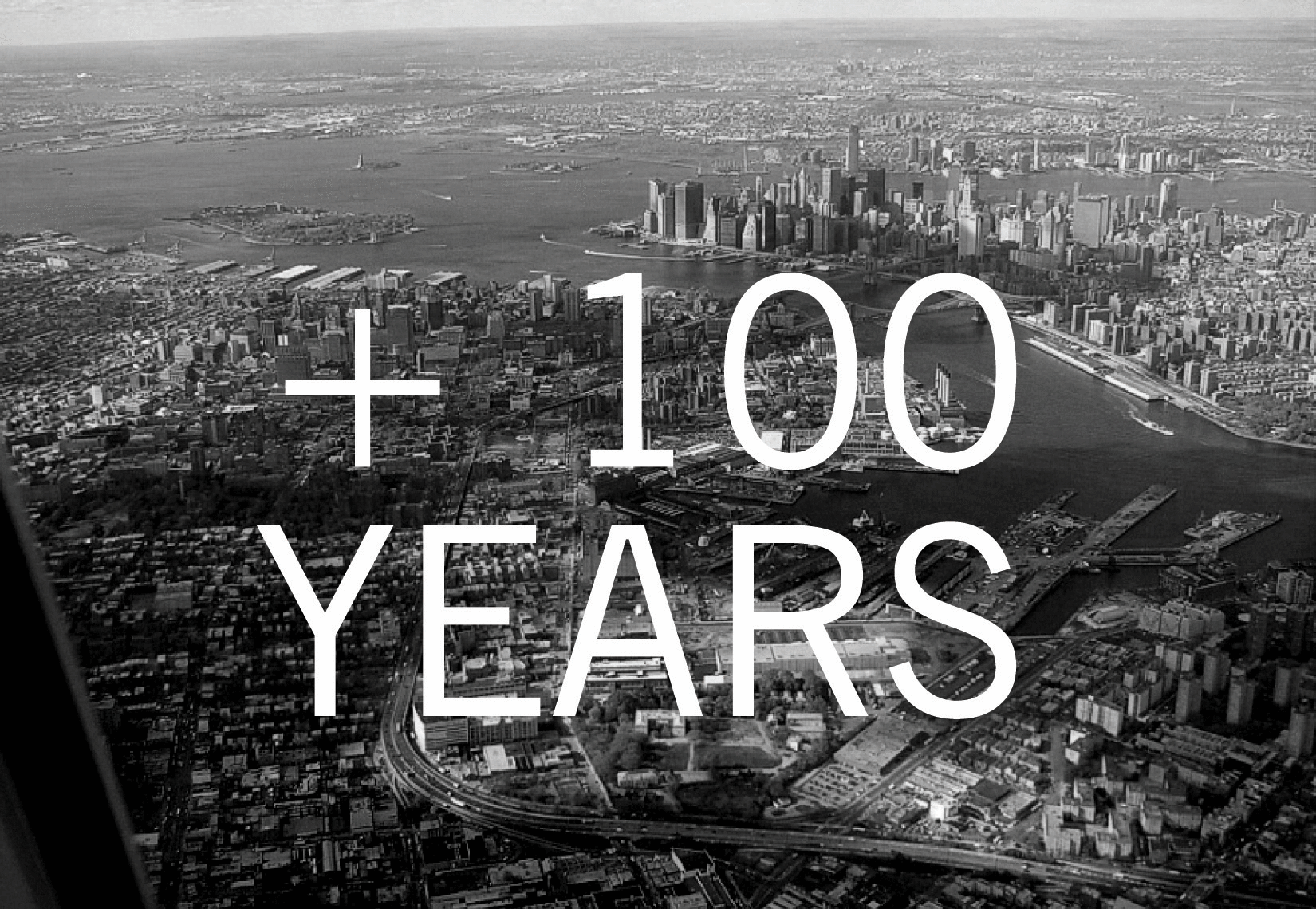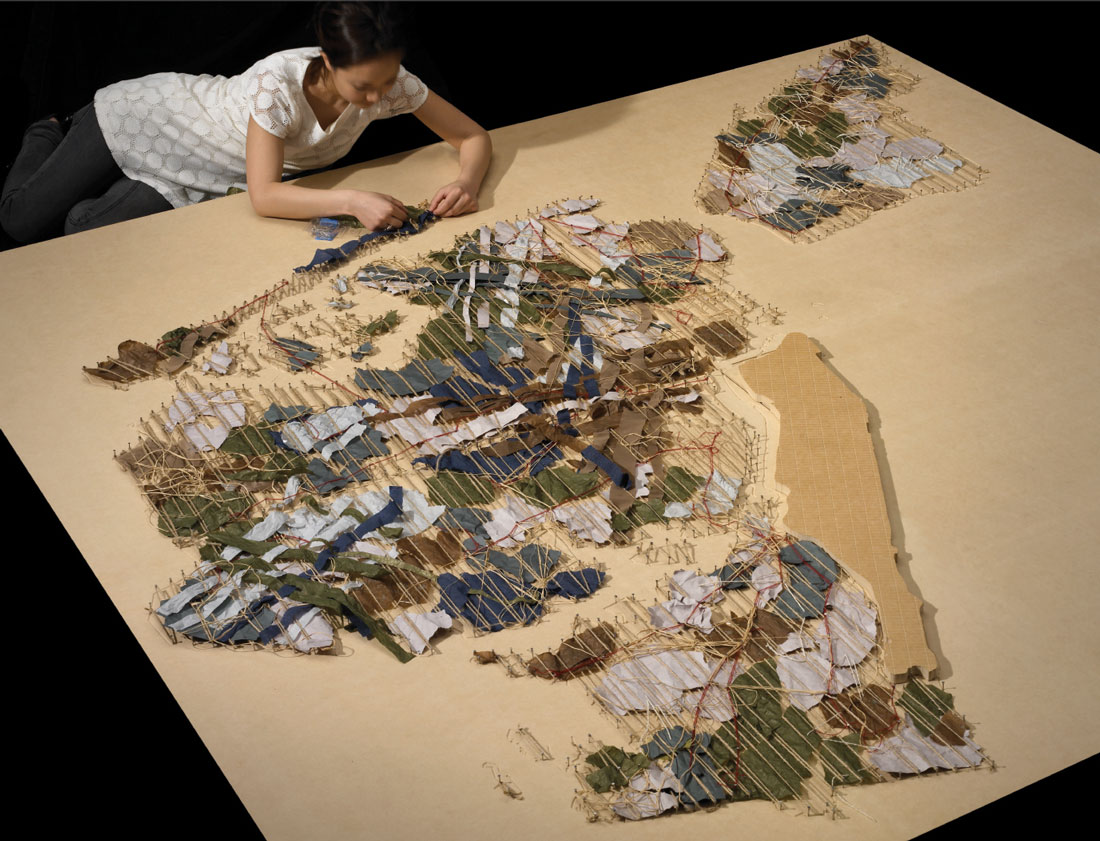The History Channel: City of the Future
Imagine the future of New York City in 100 years…
This project was created in collaboration with the think tank URGE in response to an invited competition sponsored by the History Channel. The City of the Future: A Design and Engineering Challenge celebrated the premiere of the History Channel’s Engineering an Empire, and was staged at Grand Central Terminal.
“No man is an island, entire of itself;
every man is a piece of the continent,
a part of the main.”
-John Donne, 1624 from Meditation 17: Devotions Upon Emergent Occasions
In 1624, shortly after John Donne wrote Meditation 17, European settlers established on Manhattan Island what would become the City of New York. Donne’s prose was conceived while dealing with his own illness and brings to the fore the relationship of one’s own life and body to others’ and the world.
In its nearly four centuries of existence, New York has established itself as one of the world’s great urban centers; its physical, social and economic patterns have generated one of the most compelling models for collective living, but as the most populous city in the United States it will be first to face the most difficult challenges of the coming century. The implications of an ever-increasing urban population must be considered in reference to the physical and political limits of the city. Models of expansive urbanism do not address the scarcity of land and resources that will result from the doubling not only of New York but the entire world’s population. The extension of New York into the next century demands a re-examination of the basic requirements of the individual and of urban living.
No Manhattan is an Island proposes that NYC 2106 is required to account directly for the demands of its populous using the resources of its landscape. URGE projects a scenario in which all the city’s inhabitants have been concentrated onto Manhattan Island, creating a hyperdense metropolis that is supported by the archipelago of the outer boroughs. This new teeming center of living is able to draw upon the remaining landscape for its resources and, to the greatest extent possible, the ecological footprint of the city is contained within its politicaI boundaries.
The practical advantages of consolidating both shelter and material have been recognized by past civilizations, but in the coming century they must be amplified and exploited to the greatest extent possible. NYC 2106’s hyper-density is a strategy to more effectively utilize the resources required to construct, service, and maintain this urban center. New York’s longstanding position as a cultural capital is reinforced by a greater density and diversity of wealth than ever before. The concentration of urban population and activity takes greater advantage of the social and economic capital required for a multitude of cultural activities. In addition, hyper-density addresses security through its self-reliance on material and services. The concentration of people and resources generates an infrastructure, landscape, and population that is resilient in the face of conflict.
In NYC 2016, the relationship between the supply of manufactured goods and their consumers becomes more direct. As a result of the proximity of resources new necessities that result from the density and reconfiguration of this environment enable manufacturing and market demands to be immediately met within the landscape of the city. Rather than drawing from an ever changing (likely depleting) pool of resources, the city utilizes its territory to produce what it needs to survive. Hyper-density requires a landscape infused with infrastructure and technology to create an intensely variegated and highly productive surface. But rather than producing an entire new infrastructural network to serve its burgeoning population, NYC 2106 utilizes its established infrastructures – rail, water, power – through a reconfiguration of existing systems. The introduction of new layers of movement for people and material build upon and in fact replace the existing automobile road network both in and out of Manhattan.
The proposal of the Urban Research Group intends to provoke questions that we believe will be fundamental to New York in its fifth century: What are the physical implications of requiring the city to account for its consumption, disposal, and energy? What does the individual dweller require and what are the models of living required to sustain collective habitation at more than four times our current density? The revolutionary proposition of No Manhattan is an Island is not technical, rather it is conceptual: New York City, indeed all cities, are individuals that must account in a direct way for the means by which they are sustained.






